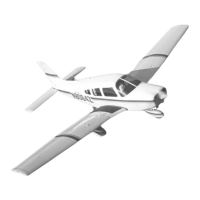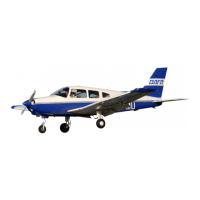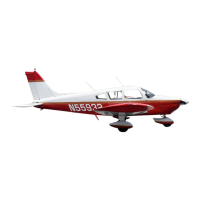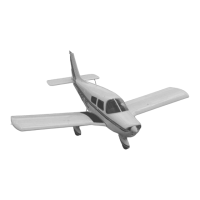4. Cranking
T
ests
WARNING: FAILURE TO CONSULT APPLICABLE VENDOR PUBLICATION(S), WHEN SERVICING
OR INSPECTING VENDOR EQUIPMENT INSTALLED IN PIPER AIRCRAFT, MAY
RENDER THE AIRCRAFT UNAIRWORTHY. (SEE INTRODUCTION - SUPPLEMENTARY
PUBLICATIONS.)
NOTE
: NEVER USE JUMPER CABLES to test voltage to the starter. The "toothed" jaws of jumper
cables are meant to "bite" into soft, leaded terminals on car batteries, and simply WILL NOT
provide enough contact with the starter terminal to supply the needed amperage to engage the
starter properly.
NO
TE
: Use an analog voltage meter if you can. Digital meters take intermittent 'snap shots' of voltage.
In situations where voltage is being supplied intermittently (even in rapid cycles), the digital
meter will simply not provide the correct 'picture' of the aircraft's voltage situation.
The starting circuit should be inspected at regular intervals. The frequency should be determined by the
type of starting conditions and the amount of starter usage. In any case, it is recommended that the
following tests be conducted each six months or every 100 hours time-in-service.
A. Check the battery with a hydrometer to make sure it is fully charged and filled to the proper level. A
load test should be made on the battery to verify proper condition before proceeding.
B. Check all starter circuit wiring, making sure all connections, including battery terminals, are clean
and tight and that all insulation is sound and complete.
C. A voltage loss test should be made to locate any high-resistance connections that would impair
starting motor electrical efficiency. Using a low-reading voltmeter scale while cranking engine (or at
approximately 100 amperes current flow) measure for the following limits:
(1) Voltage loss from the insulated (positive) battery post to the starter motor terminal = 0.3 volt
maximum.
(2) Voltage loss from the battery negative (ground) terminal to the starter motor frame = 0.1 volt
maximum.
NO
TE: If voltage loss exceeds the above limits, measure the voltage drops across all connections
to discover the faulty connection. When within the maximum limits proceed to next step.
D. The starter motor should be operated for several seconds with the ignition OFF. The starter motor
engagement should be prompt and the motor should turn freely at a uniform speed without binding
or producing unusual sounds.
E. Re-engage the starter two or three times, listening for prompt engagement, without the clashing of
gears, and to determine that the pinion disengages properly when the starter switch is released.
5. Bench Tests (See Figures 1 and 2.)
A. No-Load Test
(1) Connect as shown in Figure 1.
(2) Current measured on voltmeter should be within specifications shown in Chart 2. If current is
too high, the bearings may be mis-aligned or end play may be unacceptable. Two or three
sharp raps on the frame with a rawhide hammer will often help to align the bearings and free
the armature.
(3) If the starter passes the No-Load Test, proceed to the Stall-Torque Test, below.
PIPER AIRCRAFT, INC.
PA-28-161, WARRIOR III
MAINTENANCE MANUAL
PAGE 4
Nov 30/06
5F16
80-10-00

